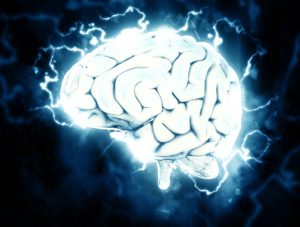Brain Bleeds [Show Notes]

Review
Your brain is held inside your skull by a tri-layer membrane called the meninges. These membranes and all the other structures in your brain are nourished by blood vessels, and different circumstances will make these vessels at risk of rupturing.
*ALL BRAIN BLEEDS REQUIRE MEDICAL ATTENTION!*
Brain bleeds are classified based on the membrane they are closest to. They can be caused by physiological malformations, stroke or aneurism from age or disease, or trauma.
From the outside in
- Extracranial bleed: (extra = external; cranial = cranium = skull bones), between your skin and your skull. Doesn’t affect your brain, there is more room for it to stretch.
- Intracranial bleed: (intra = internal); bleeds inside the skull increase the intracranial pressure and requires medical intervention. Main goal is to reduce intracranial pressure so brain cells aren’t pressed on and damaged.
- Epidural (yep, that place they put the anesthesia for women having babies, except it’s in the spinal cord): Epi = above, Dural = Dura mater, that topmost, durable layer of the meninges. Between the skull and the dura mater.
- Subdural: Sub = under; blood leaks in between the dura mater and the arachnoid mater, which are normally in close contact, so the separation causes pain.
- Subarachnoid: under the arachnoid mater. Normally, under the arachnoid layer is the subarachnoid space which contain cerebral spinal fluid (CSF). People who have had a subarachnoid bleed and survived, describe hearing a “thunderclap”. Officially called a “thunderclap headache”. It’s like they can hear the blood vessel pop and experience extreme pain all over their head all at once. Described as “the worst headache of my entire life”. Because the pia mater under the subarachnoid space lays directly on top of the brain cells and follows all the grooves and wrinkles of the brain, this type of bleed will require emergent attention and possible surgery.
- Intracerebral: cerebral = cerebrum, the main part of your brain
- Intraparenchymal: Parenchyma = organ tissue, means it’s right up against the brain cells
- Intraventricular: Ventricles = pockets inside the brain that make, hold, and reabsorb CSF. The deepest part of the brain.
*ALL BRAIN BLEEDS REQUIRE MEDICAL ATTENTION!*
Connect with me
Support us on Patreon
*NEW* Join the Pharmacist Answers Podcast Community on Facebook
Subscribe: iTunes, Stitcher, GooglePlay, TuneIn Radio
Music Credits: “Radio Martini” Kevin MacLeod (incompetech.com) Licensed under Creative Commons: By Attribution 3.0 http://creativecommons.org/licenses/by/3.0/
